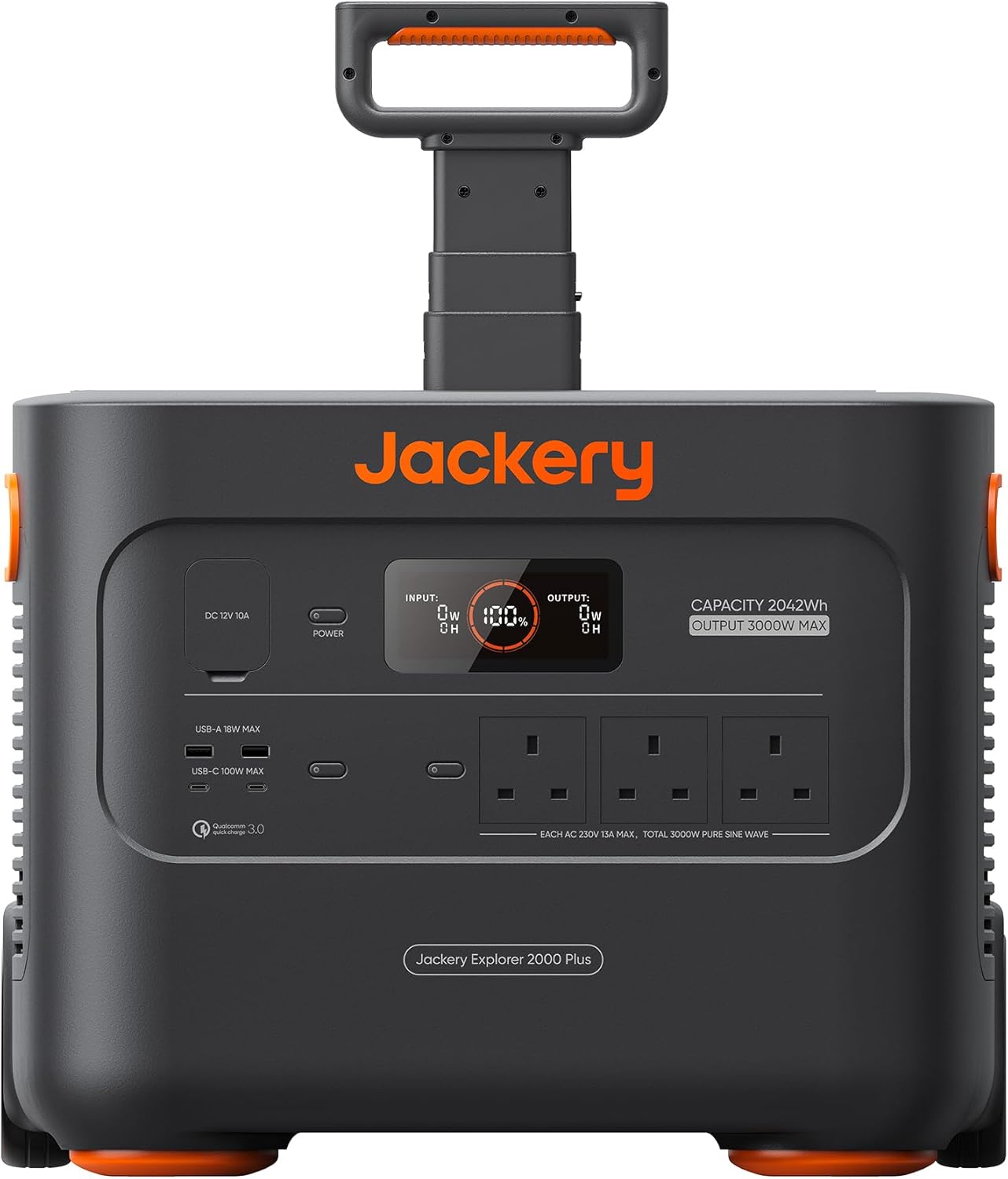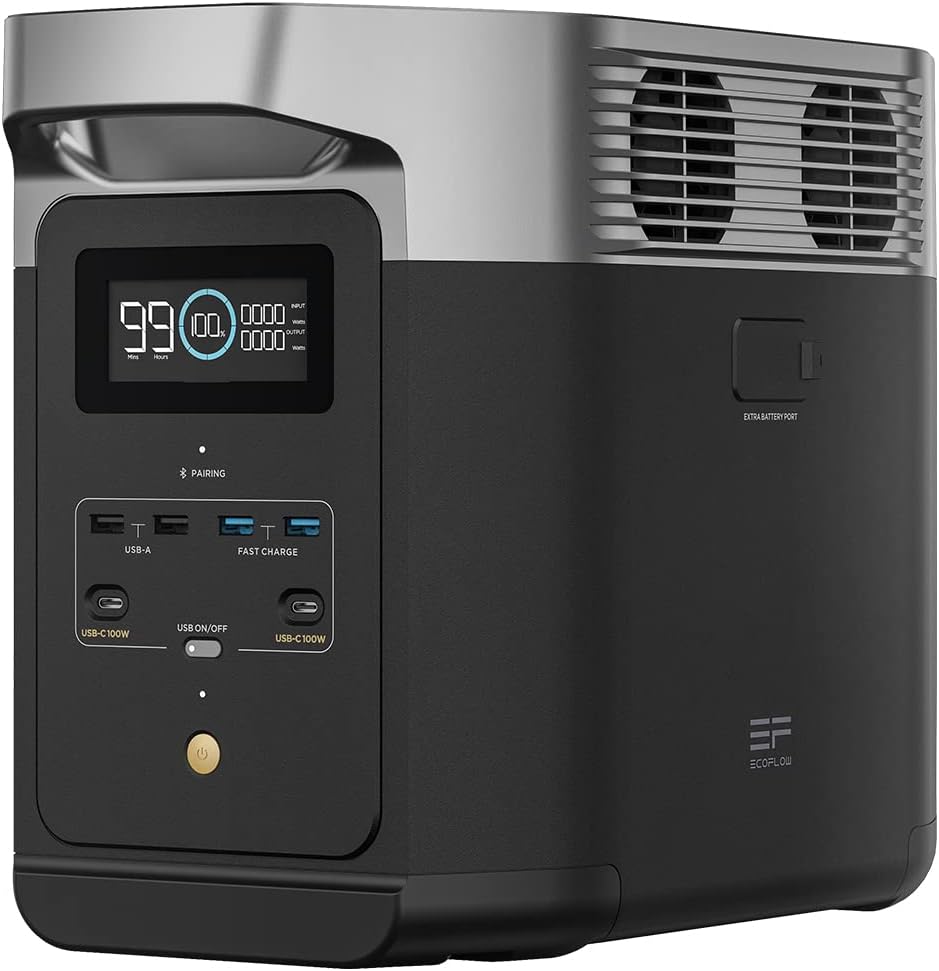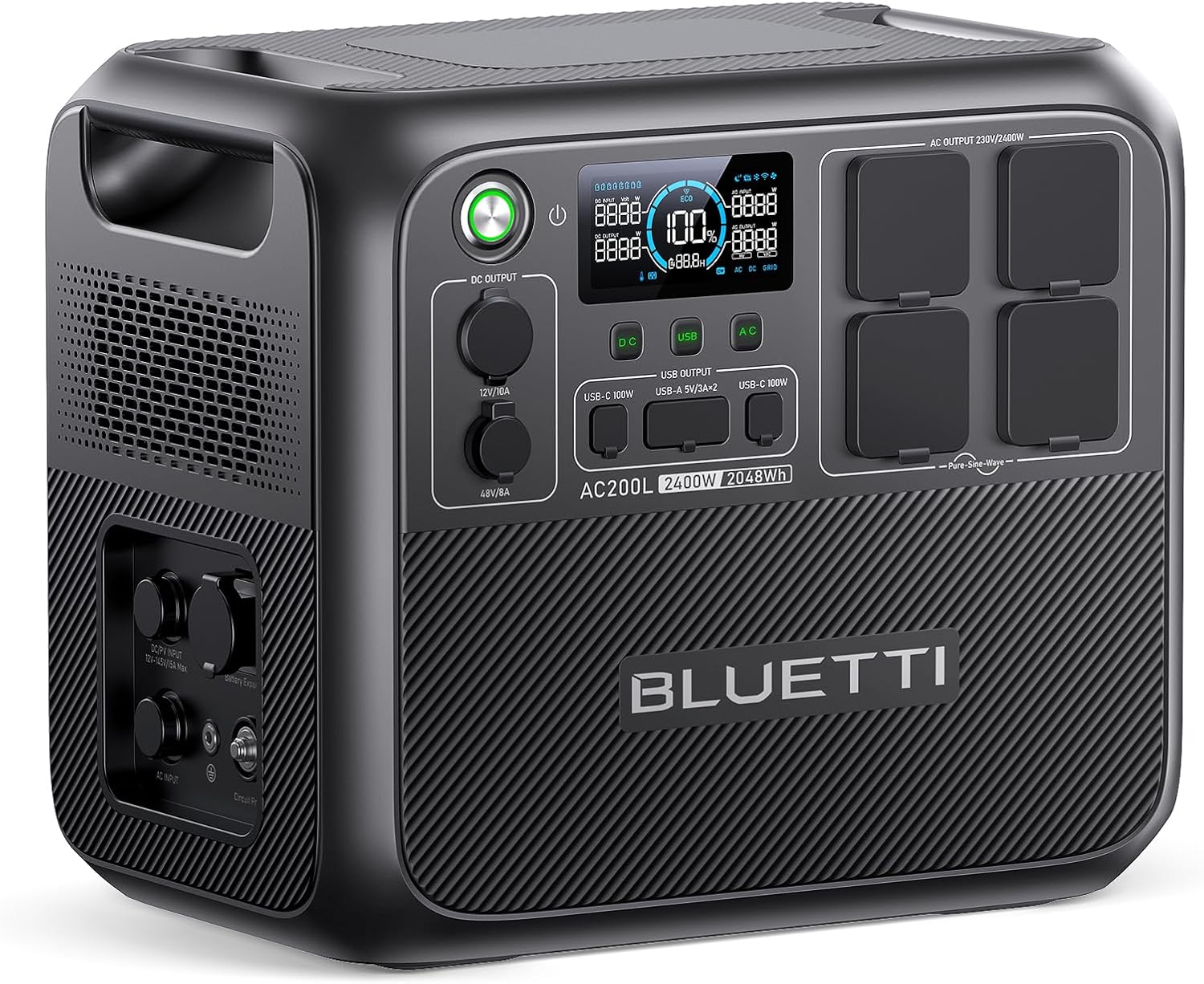Can a Portable Power Station Run Your Refrigerator?
Your Ultimate Guide to Keeping Food Cold During Power Outages & Off-Grid Adventures!
There’s nothing quite like the dread of a power outage, especially when you think about your refrigerator and the valuable food inside. Or perhaps you’re planning an epic off-grid adventure and wonder if you can bring the comforts of home with you. The good news is: Yes, a portable power station can absolutely run your refrigerator!
These versatile battery generators have become indispensable tools for emergency preparedness, camping, RVing, and even powering tools on job sites. But successfully running an appliance as critical as a refrigerator requires understanding a few key factors to ensure you pick the right power station for your needs.
The Hidden Costs of a Cold Outage: Why Your Fridge Needs Backup
While a power outage is always an inconvenience, for your refrigerator, it can quickly become a costly and even risky situation. Beyond just warm drinks, here’s what’s at stake:
- Spoiled Food & Financial Loss: A refrigerator typically keeps food safe for about 4 hours without power, and a full freezer for about 48 hours (if unopened). Beyond that, perishable food (meat, dairy, leftovers) can spoil, leading to hundreds of dollars in wasted groceries and the hassle of restocking.
- Health Risks: When food temperatures rise into the “danger zone” (between 40°F and 140°F or 4°C and 60°C), bacteria multiply rapidly, increasing the risk of foodborne illness. This is especially critical for vulnerable individuals like children, the elderly, or those with compromised immune systems.
- Ruined Special Occasions: Imagine hosting a holiday dinner, preparing a birthday cake, or having guests over, only for a power outage to hit. A melting birthday cake, spoiled ingredients for a special meal, or warm beverages can quickly turn a joyous event into a frustrating memory.
- Medical Needs: For individuals relying on refrigerated medications (like insulin or certain vaccines), a power outage poses a serious health threat. Continuous refrigeration is non-negotiable for their efficacy and safety.
- Lost Peace of Mind: Knowing your food and essentials are safe, even when the grid is down, brings immense peace of mind. A portable power station transforms anxiety into preparedness.
A portable power station isn’t just about convenience; it’s about safeguarding your health, your wallet, and your plans when the unexpected happens.
How Refrigerators Power Up (and Why It Matters)
To pick the right portable power station, you need to understand how your refrigerator consumes energy:
- Running Watts (Continuous Power): This is the power your fridge uses when its compressor is actively cooling. For a typical household refrigerator, this can range from 100 to 800 watts. Mini-fridges usually fall on the lower end, while larger, older, or high-efficiency models will vary.
- Starting Watts (Surge Power): This is the critical part! When a refrigerator’s compressor first kicks on, it requires a brief, but much larger, burst of power – known as surge or peak power. This surge can be 3 to 6 times its running wattage, for a few seconds. If your power station can’t handle this momentary spike, it will trip or simply fail to start the fridge.
- Daily Energy Consumption (Watt-hours – Wh): Refrigerators don’t run constantly; they cycle on and off to maintain temperature. The total energy they consume over a day (e.g., 24 hours) is measured in Watt-hours (Wh) or Kilowatt-hours (kWh). A modern, average-sized refrigerator might consume between 1,000 Wh to 2,000 Wh (1-2 kWh) per day. This is the figure you’ll use to estimate how long a power station can keep your fridge running.
- Pure Sine Wave Inverter: This is a non-negotiable feature. Refrigerators, like most sensitive electronics, require “clean” power, which a pure sine wave inverter provides. This protects your appliance from potential damage and ensures efficient operation.
I Love Stats! A Look at Portable Power Station & Refrigerator Performance
By the Numbers: What to Expect
- Average Refrigerator Daily Draw: A typical modern refrigerator uses between 1 kWh to 2 kWh (1000-2000 Wh) per 24 hours. Older models can use significantly more.
- Inverter Efficiency: Portable power station inverters typically operate at **85-95% efficiency**. This means if your fridge draws 100W, the power station’s battery might be supplying ~105-117W, so always factor in this loss.
- Run Time Estimates:
- A **1000Wh** power station might run a typical fridge for 10-15 hours.
- A **2000Wh** power station could last 20-30 hours.
- A **3000Wh** power station (or expandable system) could provide **30-45+ hours** of continuous backup.
- Solar Recharging: To offset usage, a **100W solar panel** in ideal conditions might generate 400-500Wh of power in a good sunny day (4-5 peak sun hours). To recharge a 2000Wh power station in one day from solar, you’d likely need **400W-500W of solar panels**.
- Temperature Impact: The colder the ambient temperature, the less a fridge’s compressor has to work, thus consuming less power. In very hot environments, consumption will increase.
- Cost of Food Loss: The average American household wastes about $1,500-$2,000 in food annually. A single significant power outage could easily contribute hundreds of dollars to this figure if food spoils.
Factors to Consider When Choosing Your Power Station
Now that you know what your fridge needs, let’s look at what your power station needs to provide:
- AC Output (Continuous & Surge): Ensure the power station’s continuous AC output rating exceeds your fridge’s running watts, and its surge capacity is higher than your fridge’s starting watts.
- Battery Capacity (Wh): This dictates how long your fridge will run. A higher Watt-hour (Wh) rating means longer runtimes.
- Calculation Tip: (Power Station Wh Capacity) / (Refrigerator Average Hourly Wattage) = Estimated Run Time (hours). Remember to factor in a 10-15% efficiency loss for the inverter. For example, if your fridge averages 75W per hour and you have a 1000Wh power station: `1000 Wh / 75 W = 13.3 hours`. Account for losses, and you might get closer to 10-12 hours. For multiple days of backup, you’ll need significantly more capacity.
- Battery Chemistry (LiFePO4 vs. NMC):
- LiFePO4 (Lithium Iron Phosphate): Offers a much longer lifespan (3,000+ charge cycles to 80% capacity), making them more durable and cost-effective in the long run. They are also generally safer and more stable.
- NMC (Nickel Manganese Cobalt): Typically offers higher energy density (more power in a smaller, lighter package) but fewer charge cycles (500 – 1000 cycles).
- Recharging Options: Look for versatile charging methods:
- AC Wall Outlet: For fast charging before an anticipated outage or trip.
- Solar Input: Essential for extended off-grid use or multi-day power outages. Check the max solar input (watts) and voltage range.
- Car (12V): A slower but convenient option on the go.
- Portability & Weight: Consider how you’ll be moving the power station. Larger capacities often mean heavier units.
- Extra Features: USB ports for charging devices, built-in lights, app control, and expandable battery options can add significant value.
Top Power Stations for Your Refrigerator
When selecting a power station for your refrigerator, prioritize models with high capacity, strong AC output and surge capability, and reliable pure sine wave inverters. Here are three top contenders known for their performance and suitability for running refrigerators:
1. Jackery Explorer 2000 Plus

The Jackery Explorer 2000 Plus is a robust power solution, highly recommended for running full-sized refrigerators and handling their significant starting surges. Its modular design allows you to expand its already impressive capacity to meet extensive backup needs, making it ideal for multi-day outages or off-grid living.
- Battery Capacity: 2042.8Wh (expandable up to 24kWh with additional battery packs)
- AC Output: 3000W continuous (6000W surge peak)
- Battery Chemistry: LiFePO4 (4000 cycles to 70%+)
- Key Features: Pure Sine Wave Inverter, very high surge capability, extremely expandable, fast AC charging (approx. 2 hours), high solar input (up to 1200W).
As an Amazon Associate, we earn from qualifying purchases. This helps support our content.
2. EcoFlow DELTA 2

The EcoFlow DELTA 2 strikes an excellent balance of power, speed, and versatility. While its base capacity is compact, it’s highly expandable, and its standout feature is the incredibly fast AC charging and the X-Boost technology, which allows it to power higher-wattage appliances like refrigerators with ease.
- Battery Capacity: 1024Wh (expandable up to 3040Wh with extra batteries)
- AC Output: 1800W continuous (2700W surge, X-Boost up to 2400W)
- Battery Chemistry: LiFePO4 (3000 cycles to 80%+)
- Key Features: Pure Sine Wave Inverter with X-Boost, ultra-fast AC charging (0-80% in 50 mins), high solar input (up to 500W), app control.
As an Amazon Associate, we earn from qualifying purchases. This helps support our content.
3. BLUETTI AC200L

The BLUETTI AC200L is an upgraded, powerhouse portable power station, ideal for critical home backup and off-grid scenarios. It boasts a powerful inverter for demanding appliances like refrigerators, significantly faster charging, and robust expandability, making it a reliable and versatile choice for any power need.
- Battery Capacity: 2048Wh (expandable up to 8192Wh with external battery modules)
- AC Output: 2400W continuous (7200W surge, Power Lifting Mode up to 3600W)
- Battery Chemistry: LiFePO4 (3000+ cycles to 80%+)
- Key Features: Pure Sine Wave Inverter, ultra-fast AC charging (80% in ~45 mins), higher solar input (up to 1200W), Wi-Fi & Bluetooth app control, multiple DC outputs including 48V RV port.
As an Amazon Associate, we earn from qualifying purchases. This helps support our content.
Frequently Asked Questions (FAQs)
Q1: How long can a portable power station run my refrigerator?
A: This depends on the power station’s capacity (Wh) and your refrigerator’s energy consumption. A modern fridge typically uses 100-200W when running. For a 1000Wh power station, you might get 10-20 hours of runtime if the fridge runs about 50% of the time. Larger power stations (2000Wh+) can provide 24 hours or more. Always check your fridge’s actual wattage and cycle times for a more accurate estimate.
Q2: Will it work for all refrigerators, including mini-fridges or freezers?
A: Portable power stations can work for almost any refrigerator or freezer, provided the power station’s continuous and surge output ratings meet or exceed the appliance’s requirements. Mini-fridges consume much less power (often 50-80W running), so they are easier to power and will run for significantly longer on smaller power stations. Freezers often have higher running and starting wattages than standard refrigerators.
Q3: Can I recharge the power station with solar panels while it’s running the fridge?
A: Yes, most high-quality portable power stations support pass-through charging, meaning you can charge them via solar panels (or AC) while simultaneously powering devices like your refrigerator. This is ideal for continuous power during extended outages or multi-day off-grid living.
Q4: Is the battery chemistry (LiFePO4) really important?
A: Yes, for appliances like refrigerators that you might want to run frequently or during critical situations, LiFePO4 batteries are highly recommended. They offer thousands of charge cycles (often 3,000 to 6,000+ to 80% capacity), meaning they will last for many years of regular use. NMC batteries, while often lighter, typically offer only 500 – 1000 cycles, significantly shortening their lifespan with frequent use.
Q5: What if my refrigerator has a very high starting watt requirement?
A: If your fridge has a particularly high surge (common with older models or specific types of compressors), look for power stations with “X-Boost,” “Powerlifting,” or similar technologies. These features allow the inverter to temporarily handle devices that exceed its rated output, usually by reducing the voltage slightly, which most resistive loads (like heating elements) or induction motors can tolerate.
Conclusion
So, to definitively answer your question: Can a Portable Power Station Run Your Refrigerator? Absolutely, yes! This capability transforms potential frustration into peace of mind during unexpected power outages.
By understanding your refrigerator’s power needs and choosing a power station with adequate capacity, robust AC output, and long-lasting LiFePO4 batteries, you ensure your food stays fresh and essential medications remain viable. Top models like the Jackery Explorer 2000 Plus, EcoFlow DELTA 2, and BLUETTI AC200L are designed for this very purpose.
More than just emergency backup, a portable power station opens up new possibilities for off-grid adventures and enhances your household’s resilience. It’s a smart investment that provides tangible benefits, ensuring you’re prepared for anything life throws your way.
Looking for a different Power Station? Find Your Perfect Power Solution!
From unexpected outages to remote adventures, portable power stations offer the reliable energy solution you need to keep all your essential devices running.
Find Your Power Station